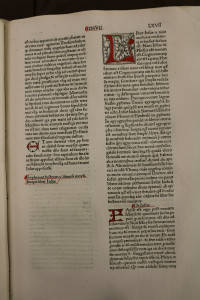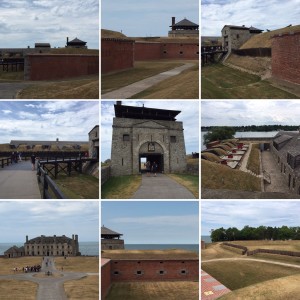
As an undergraduate I embarked on a solo transcription and translation of a portion of Boise State University’s sixteenth century copy of Peter Comestor’s Historia Scholastica, a twelfth century university history textbook. In order to perform a proper textual comparison, I needed to procure another version of this text. My search led me to the University of Iowa Library Special Collections. After a thoroughly enjoyable exchange between myself and the curatorial staff I obtained digital representations of what I needed.
This experience had a real impact on me. I decided I needed to find out how one came to be in a position to be around old texts all the time.
For this purpose I contacted Amy H. Chen, Special Collections Instruction Librarian at the University of Iowa. I asked, “What path led you to your current position?”
She replied, “I obtained a PhD in English from Emory in 2013. During my time at Emory, I worked in the Manuscript, Archives, and Rare Book Library (MARBL, now Rose Library). That experience allowed me to get a Council on Library and Information Research (CLIR) postdoctoral fellowship at the University of Alabama, where I worked from 2013-2015 as the coordinator of exhibitions, instruction, and online outreach. I then moved to the University of Iowa to serve as the Special Collections Instruction Librarian in June 2015. In October 2016, I became the interim English and American Literature librarian.”
Having no idea as to what a Special Collections librarian does, I asked, “What sort of projects do you work on?”
“I coordinate instruction for our department, which means managing the 250+ classes that book with us on an annual basis. I also do teach, but we all teach here at Iowa. On the side, I do things like develop games (#codexconquest and #markthegame on Twitter if you want to check it out), serve on local and national committees for both English and special collections, and conduct my own research. I publish in the fields of pedagogy and literary collection acquisition; the latter of which I am currently writing an academic book on.”
Intrigued by these opportunities, I asked, “Are you afforded autonomy to pick your own projects, or are projects generally assigned to you by other in your organization or elsewhere?”
“I create my own projects,” she stated, “aside from the general coordination of instruction.”
Knowing so little about the challenges that Special Collections librarians I asked, “What are the current issues in your field?”
“The role of PhDs in libraries, PhD job placement overall, increasing pedagogy in special collections to partner with DH and move beyond show and tells, information literacy standards (especially following the election!), moving toward multiple sessions per class rather than one shot classes, game development in higher education.”
I asked, “How is your position currently funded? Is this typical for positions in your field or organization?”
She answered, “I am salaried through my department, yes, this is normal. I am salaried as a Librarian II (will be a III in June 2017) but many are salaried on a non-librarian level.”
Hoping that she was as enamored with Historia Scholastica as I am, I asked, “Knowing that you prize everything in your care, is there one thing you prize above the others?” I was dismayed when she replied, “Maybe our Babylonian clay tablet, our oldest item in the collection. I also am partial to our medieval manuscripts on paper (especially rare), and the marker drawings of Kurt Vonnegut.”
While medieval text books, clay tablets, ink drawings, and the lot are special, and worthy of the title, it is my humble opinion the most special thing is Special Collections are the librarians charged with their protection.


 Why did I subject my family to another two hours on the road when they had already been in the car for twice that long? Because I had written a paper on the event, and I wanted to see the landscape for myself.
Why did I subject my family to another two hours on the road when they had already been in the car for twice that long? Because I had written a paper on the event, and I wanted to see the landscape for myself.

